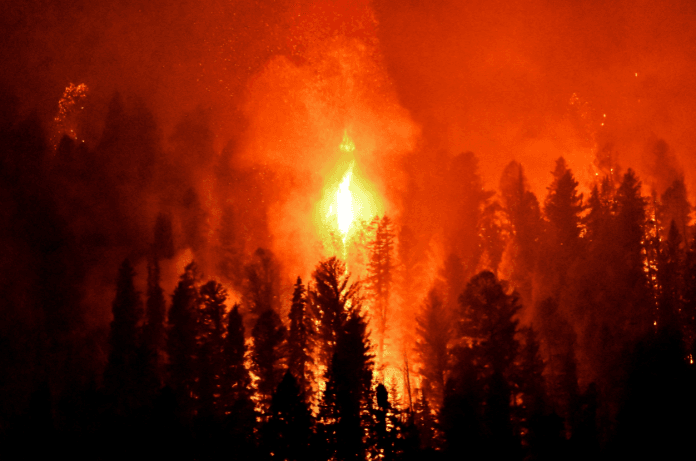Megafires, defined as fires exceeding 100,000 hectares, are becoming increasingly prevalent due to climate change and land-use practices. The 2019–2020 Australian megafires, with 12 such fires spanning 10.3 million hectares, have highlighted the severe impact of these events on biodiversity. These megafires are repeated around the world, with over 17 million hectares burnt in Canada in 2023 and the European Union experiencing its largest fires on record. The frequency of the extent of these megafires is directly proportional to worsening the of biodiversity.
In response to the catastrophic Australian fires, extensive biodiversity monitoring was conducted. Data from 62 datasets, encompassing over 810,000 records on 2,200 taxa, were collected across six ecosystem types. This research represents the largest dataset of post-fire responses globally, offering a unique opportunity to understand the biodiversity impacts of megafires.
Key Findings
Some experts propose classifying these events as giga- and tera-fires, reflecting their unprecedented scale. Comprehensive research was conducted to assess post-fire biodiversity impacts, gathering data from 62 projects funded by the Australian Government’s Wildlife and Habitat Bushfire Recovery Program. These projects spanned various regions of Australia, utilizing methodologies like before–after studies, control-impact designs, and before–after-control-impact approaches to evaluate the effects on species abundance and occurrence.
The findings revealed significant regional variation in impact, with high-severity fires and pre-fire drought conditions amplifying biodiversity loss. Effect sizes were calculated using standardized methods to ensure generalizability, revealing both negative and positive effects on species and habitats. Notably, unburnt areas within the fire footprint served as critical refuges for biodiversity.
-
Areas with Frequent and Severe Fires
The most significant biodiversity impacts were observed in regions that had experienced frequent or recent fires. High-severity fires caused more pronounced declines in abundance and occurrence, particularly in areas with limited unburnt vegetation nearby. These effects were exacerbated in habitats under extreme drought or outside protected zones.
-
Species-Specific Responses
The effects of megafires varied across taxonomic groups. Mammals showed the largest

Image: Illustration of birds in megafires responses, plants, insects, and reptiles showed moderate responses with some populations declining significantly while others increased. These mixed responses highlight the complex interplay of factors such as species interactions, dispersal mechanisms, and in situ survival.
- Influence of Fire Frequency and Interval
Frequent fires (three or more in 40 years) led to larger biodiversity declines, especially in ecosystems that lacked sufficient recovery time. Short inter-fire intervals (less than 10 years) reduced habitat features critical for recovery, such as tree hollows and standing deadwood. Conversely, intermediate fire intervals (11–20 years) allowed ecosystems to recover more effectively. -
Role of Unburnt Areas and Protected Zones
Proximity to unburnt vegetation mitigated declines, as these areas served as refuges and sources for recolonization. Protected zones showed smaller negative effects, likely due to their better resource availability and fewer co-occurring threats, such as invasive species.
-
Drought as a Compounding Factor
Pre-fire drought intensified negative impacts, with areas experiencing severe drought showing the highest biodiversity losses. This interaction between drought and fire underscores the compounded stressors facing ecosystems under climate change.
Lessons for Future Fire Management
Tailored Fire Regimes
Frequent fires, while sometimes necessary to reduce fuel loads, can have detrimental effects if not carefully managed. Prescribed burns should aim for intervals that balance fire risk reduction with ecosystem recovery needs. In forests prone to frequent wildfires, rapid suppression may be a better alternative to avoid further biodiversity losses.
Protecting Key Ecosystems
Wet ecosystems, such as rainforests, are particularly vulnerable to megafires. Expanding protected areas and ensuring the presence of unburnt refuges can help safeguard these critical habitats. Additionally, maintaining longer inter-fire intervals in vulnerable regions can provide time for species recovery and habitat restoration.
Indigenous Fire Practices
Indigenous fire management practices offer valuable insights into placing the right fire regimes in the right landscapes. Integrating traditional knowledge with modern science can create more effective and culturally sensitive fire management strategies.
Broader Implications and Global Lessons
The findings from the Australian megafires offer insights applicable to fire-prone regions worldwide. Similar patterns of biodiversity response are observed in ecosystems like coral reefs. Here resilience depends on biological legacies and recovery from less-disturbed refuges. Protected areas, both terrestrial and marine, play a critical role in enhancing ecosystem resilience to severe disturbances.
Management strategies must be tailored to specific ecosystems as fire weather becomes more extreme globally. For instance, while frequent low-severity fires benefit some North American dry forests, other ecosystems, such as Australia’s ash forests, require prolonged fire suppression for long-term recovery.
The Path Forward
The increasing prevalence of megafires necessitates a shift in fire management approaches. Policymakers and conservationists must prioritize:
- Reducing Fire Frequency: Rapid wildfire suppression in frequently burnt areas can limit further biodiversity loss.
- Protecting Drought-Resilient Areas: Identifying and preserving drought refuges can enhance ecosystem resilience.
- Expanding Protected Zones: Increasing protected land coverage can buffer species responses to fires and support recovery efforts.
While these measures can mitigate immediate impacts, addressing the root cause of anthropogenic climate change remains the ultimate solution. Reducing greenhouse gas emissions and implementing climate-resilient land-use policies are critical to curbing the increasing intensity of wildfires.
These insights emphasize the urgent need for targeted fire management strategies, longer inter-fire intervals, and the integration of Indigenous knowledge. Additionally, reducing greenhouse gas emissions remains crucial to mitigating the intensity and frequency of future megafires. As the scale and complexity of these fires grow, the lessons from Australia underscore the importance of global collaboration and proactive measures to safeguard ecosystems and biodiversity against the mounting threat of megafires.

